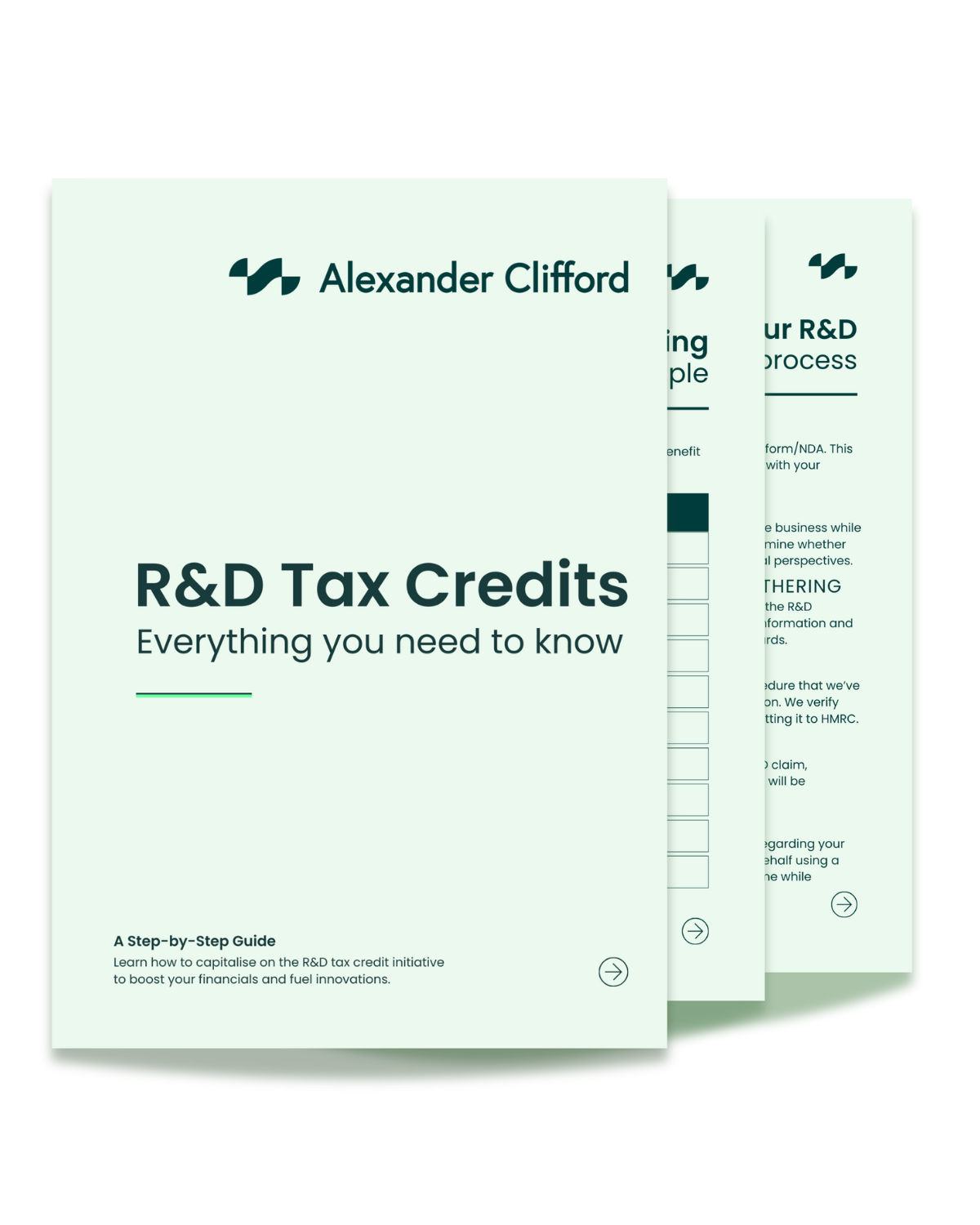Overview
Qualifying at a Glance
Even as an innovative business, you may be surprised to know the extent of manufacturing projects that can qualify for R&D tax credits. Examples of qualifying
R&D in the manufacturing industry include:
- Creating sustainable alternatives – Researching and adopting eco-friendly manufacturing processes to meet environmental regulations.
- Personalising a product – Meeting individual customer preferences by finding a way to provide customisation to a product.
- Integration of AI and Machine Learning – Exploring how AI and ML algorithms can optimise production processes, predictive maintenance, and quality control.
- Improving a process – Innovating production methods and equipment to increase efficiency, reduce waste, and lower manufacturing costs.
- Introducing robotics or automation – Implementing and optimising robotic systems and automation technologies to streamline manufacturing processes.
- Finding a way to increase precision – Exploring additive manufacturing (3D printing), precision machining, or other cutting-edge techniques to improve production processes.
- Quality control and testing – Developing new testing methods and systems to ensure the quality and reliability of manufactured products.
- Waste reduction and recycling – R&D efforts focused on finding ways to minimise waste generation during manufacturing and exploring recycling and circular economy practices.

You are in a strong position to qualify for R&D claims if you have:
Ask Yourself
- Did you conduct R&D activities to develop new products, processes, or services or to improve existing ones?
- Did the R&D activities involve the resolution of technical uncertainties or challenges that could not be solved by using existing knowledge?
- Did your products or services require extensive trial and testing throughout the creation process?
If you are answering yes, you may qualify to claim back up to 27% of eligible R&D expenditure through HMRC’s R&D Tax Relief Initiative. Contact one of our R&D tax credit specialists to seek further advice on how to proceed with your R&D claim.
The claim process
We understand the complications that can often arise when completing an R&D claim, not to mention the significant amount of time it can consume, diverting your attention from driving your innovation forward. That's why we have streamlined a transparent and hassle-free process that follows a step-by-step approach from start to finish.
Throughout your R&D claim process, we maintain open lines of communication tailored to your preferences. Once we have compiled comprehensive technical and financial reports, we take the responsibility of submitting them and proactively follow up with HMRC, leading the communication on your behalf. Often, our next contact with you brings the exhilarating news of success and positive outcomes.

